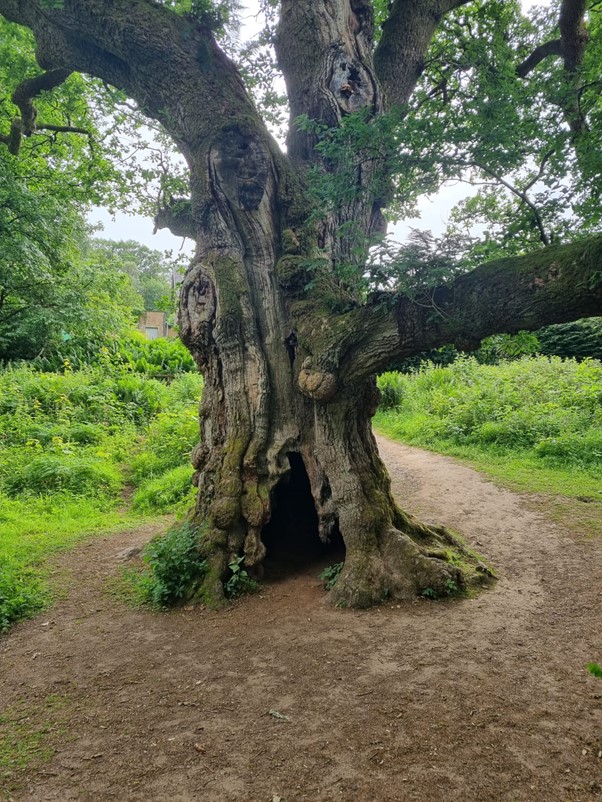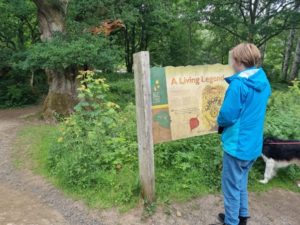
I’m Emma, I’m a second year Drama and English student and I was lucky enough to work with Dr. Toria Johnson on the Collaborative Research Internship Project “Local/Global Birnam Oak”, examining the cultural reach of the Birnam Oak, the last surviving oak from the Birnam Wood depicted in Shakespeare’s Macbeth! I specialized in researching contemporary references to the Birnam Oak in literature and media, looking at Elinor Catton’s Birnam Wood, The Diplomat, Hamilton, and more. Going into this project, I was quite nervous and didn’t know what to expect. I struggled with imposter syndrome and didn’t know if my ideas as a researcher were worth investigating. Even though I was extremely excited about this project, I knew I would be entering an unfamiliar world.
Following some guidance from Toria (my project lead), my first day’s work involved compiling a source table of contemporary references to the Birnam Oak in contemporary literature and media. By my next meeting, I had a range of sources including Hamilton, Calixto Bieito’s production Forests, and Netflix’s ‘The Diplomat’. However, my notes for each of these were rather minimal, despite having many ideas for what Birnam Wood meant to these texts. During my meeting, Toria made it clear that my thoughts and ideas were exactly what she was interested in, and I was encouraged to write them down. From that point on I felt valued and liberated with the work and it changed how I viewed academic research as a career path that I didn’t think I could do.


As the internship progressed, I also became aware of the real-world impact my research had. During my family holiday in Scotland, I visited the Oak and created a report on the existing information and ways to improve it. The first thing I noticed when I got there was the lack of information in Birnam about how to find the Oak and the limited information on it when you got there. The Oak tree itself is approximately 600 years old and is supported by wooden beams to prevent it from collapsing under its own weight. Due to its close proximity to the River Tay, there is a risk of further flooding damage and further conservation efforts may need to be made. It was inspiring to know that the work I was doing might play a part in preserving the Oak’s legacy for future generations to come and allowing those who visit it to get to know the Birnam Oak not just as a remnant from Macbeth, but as a continuing symbol of rebellion and change.
Emma Hobbs, BA Drama and English
